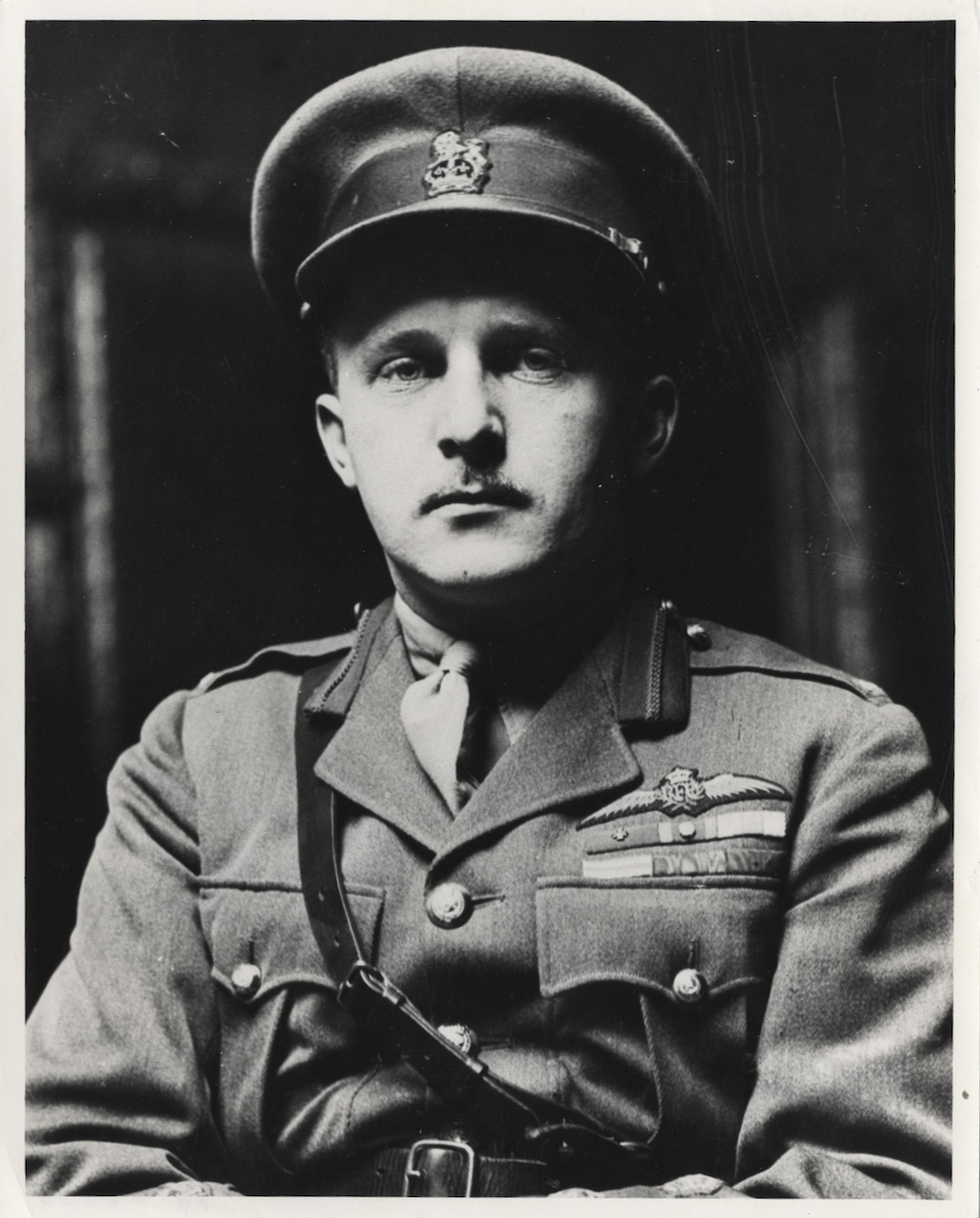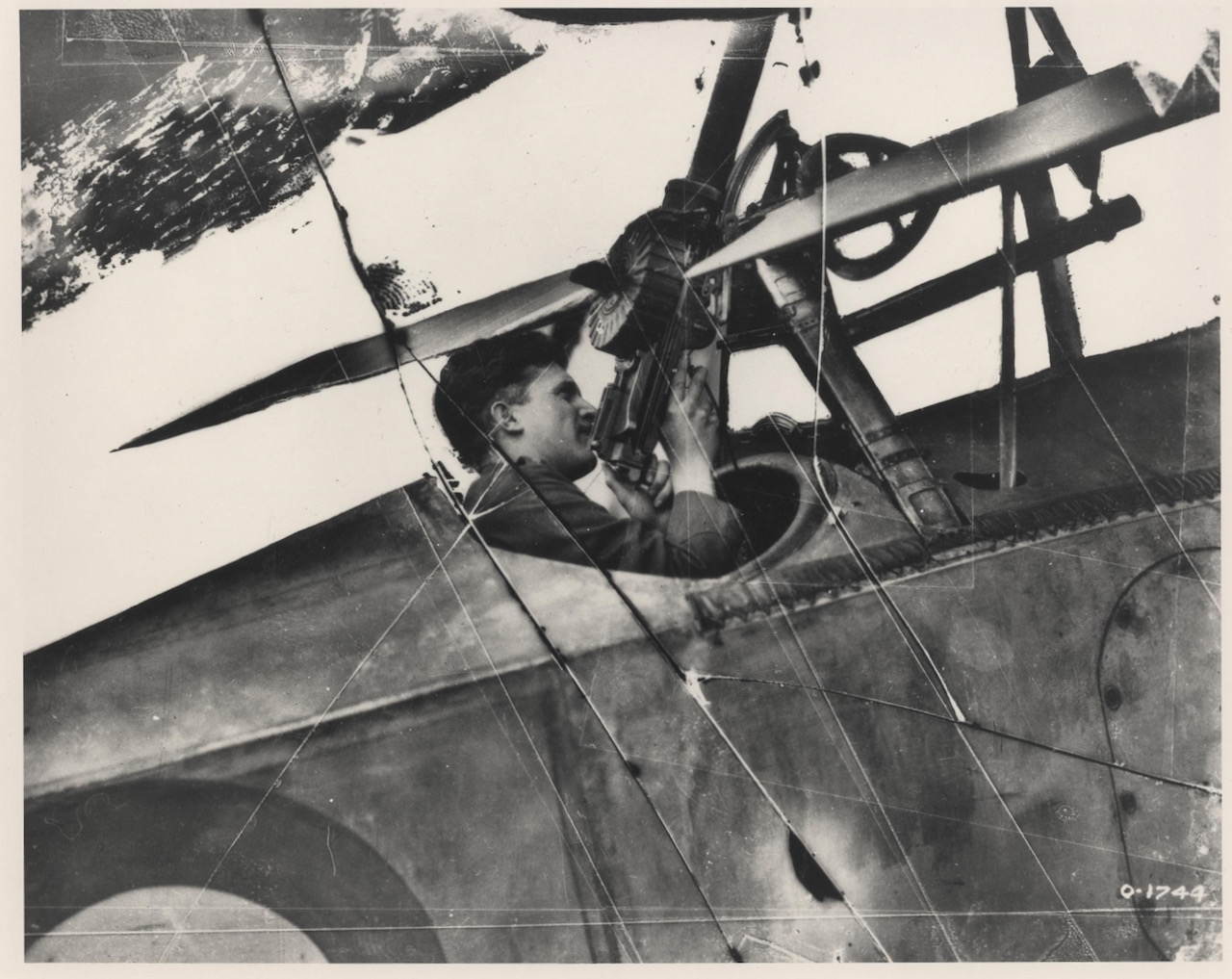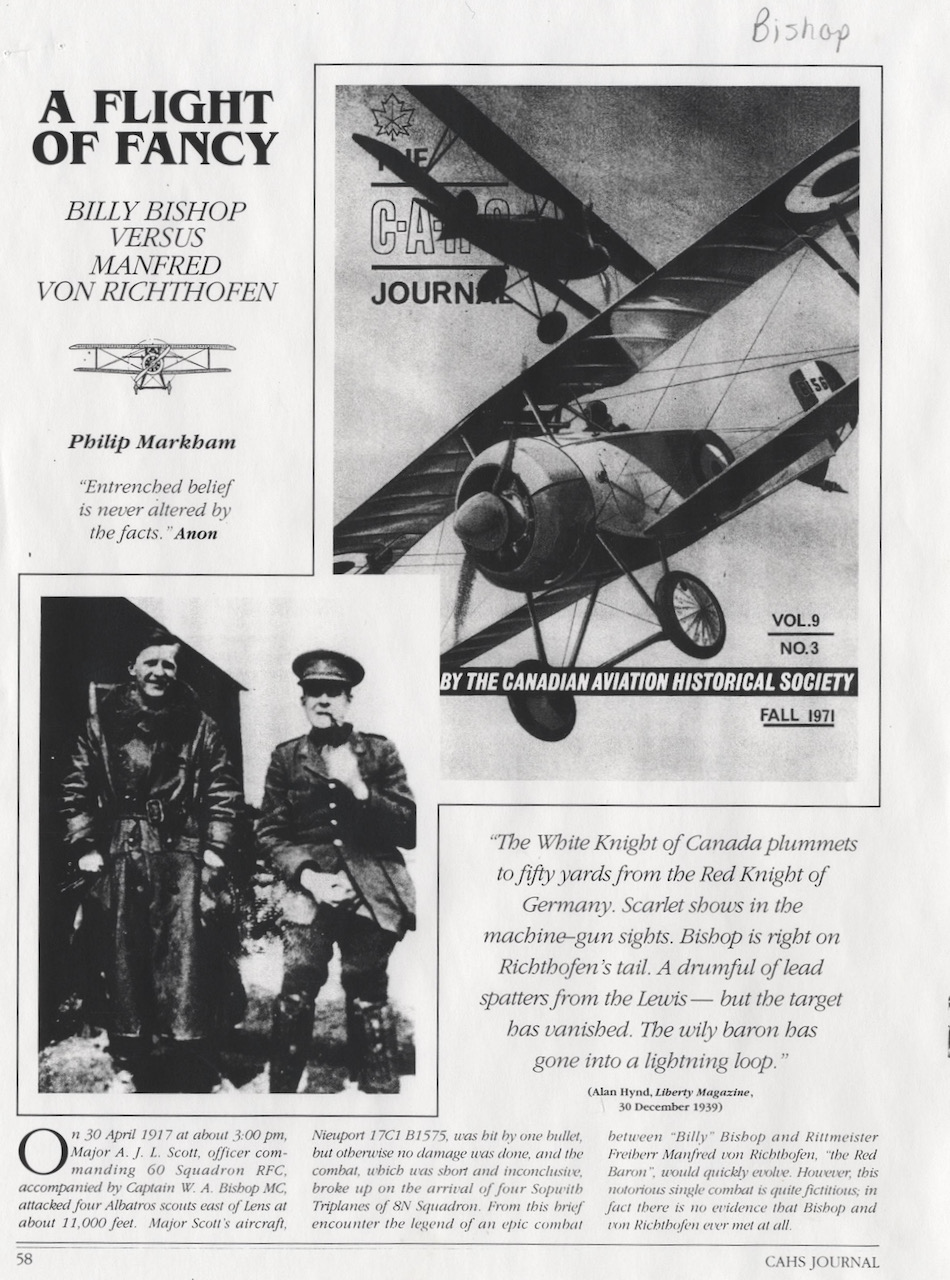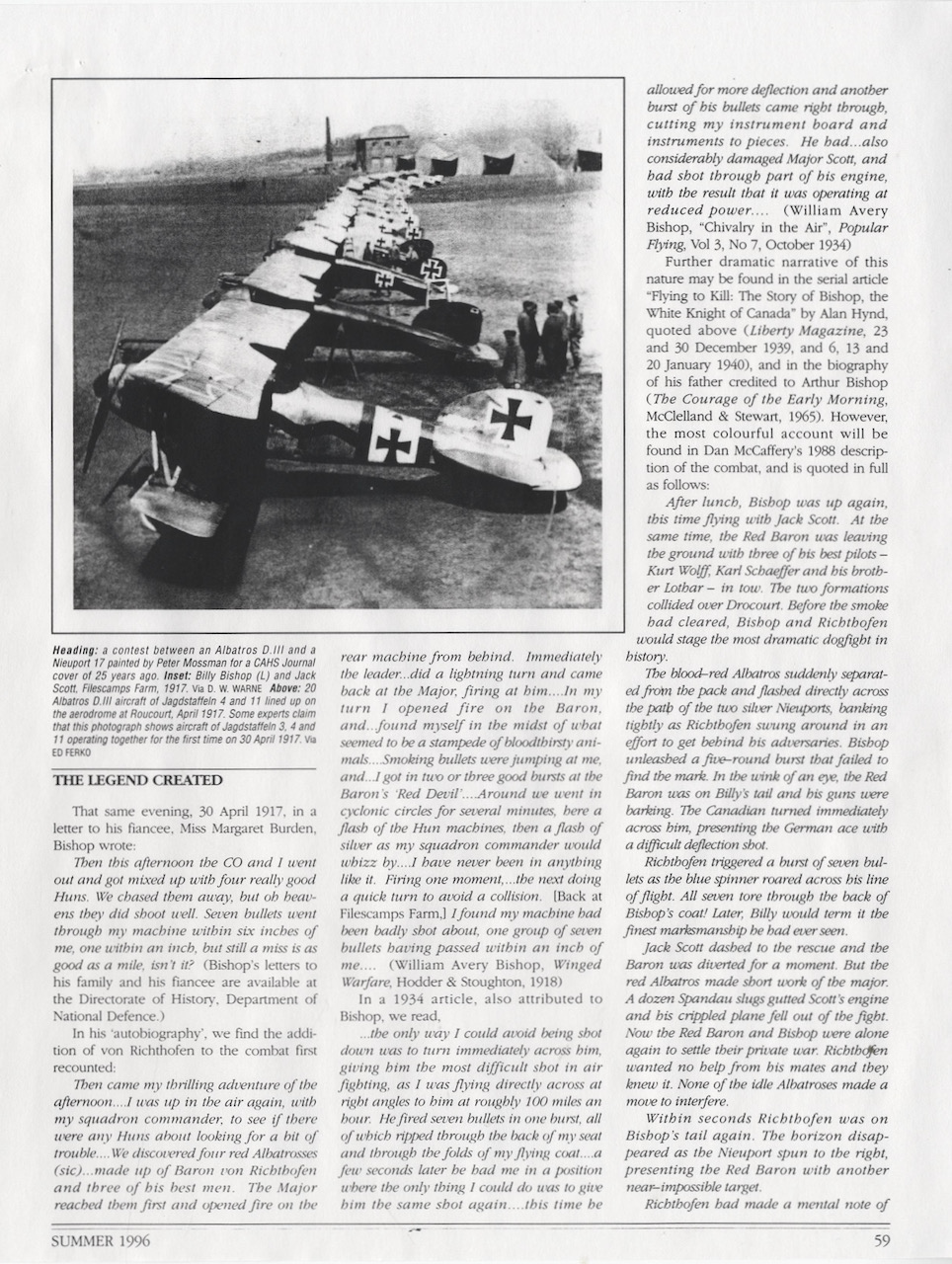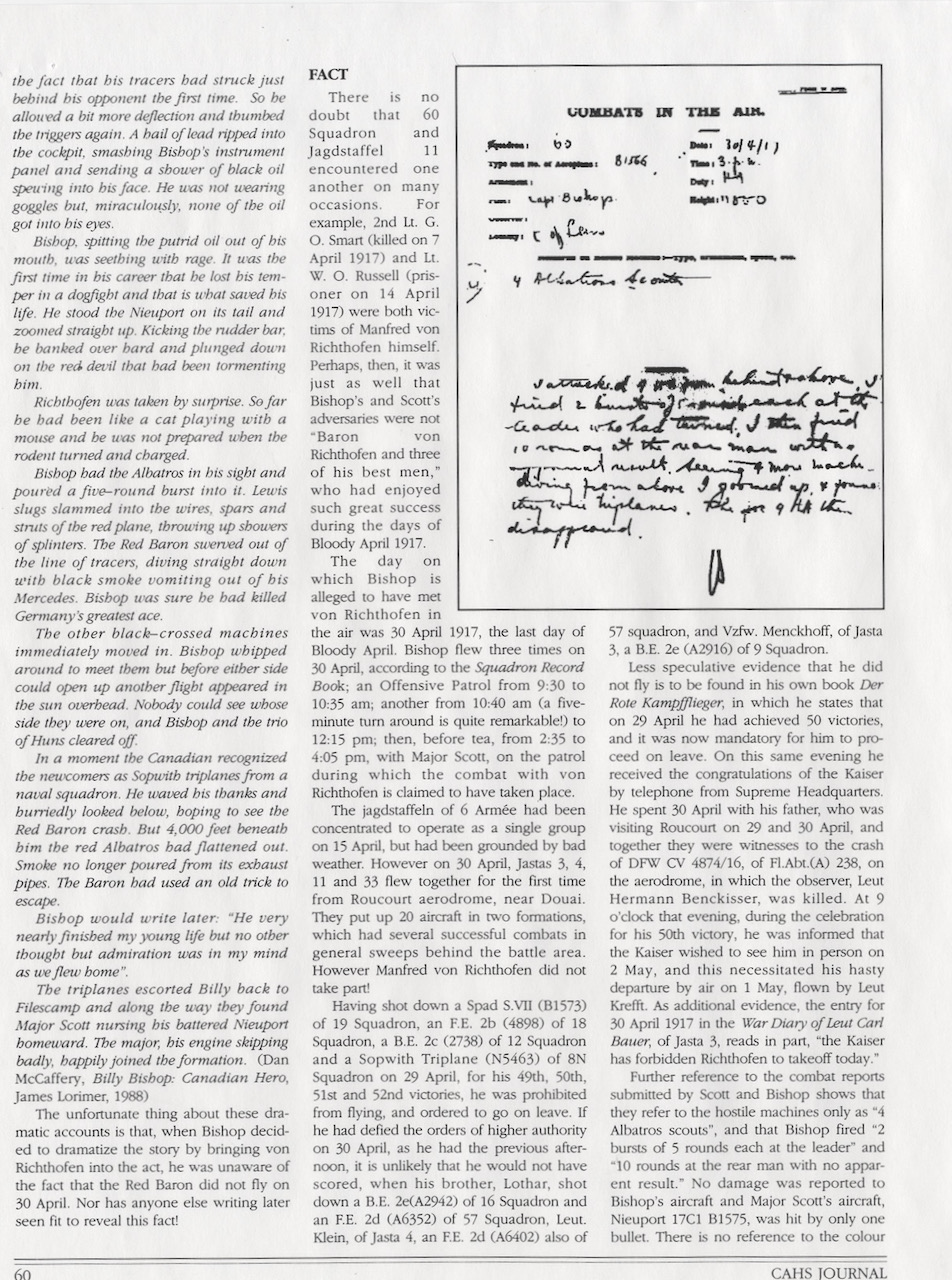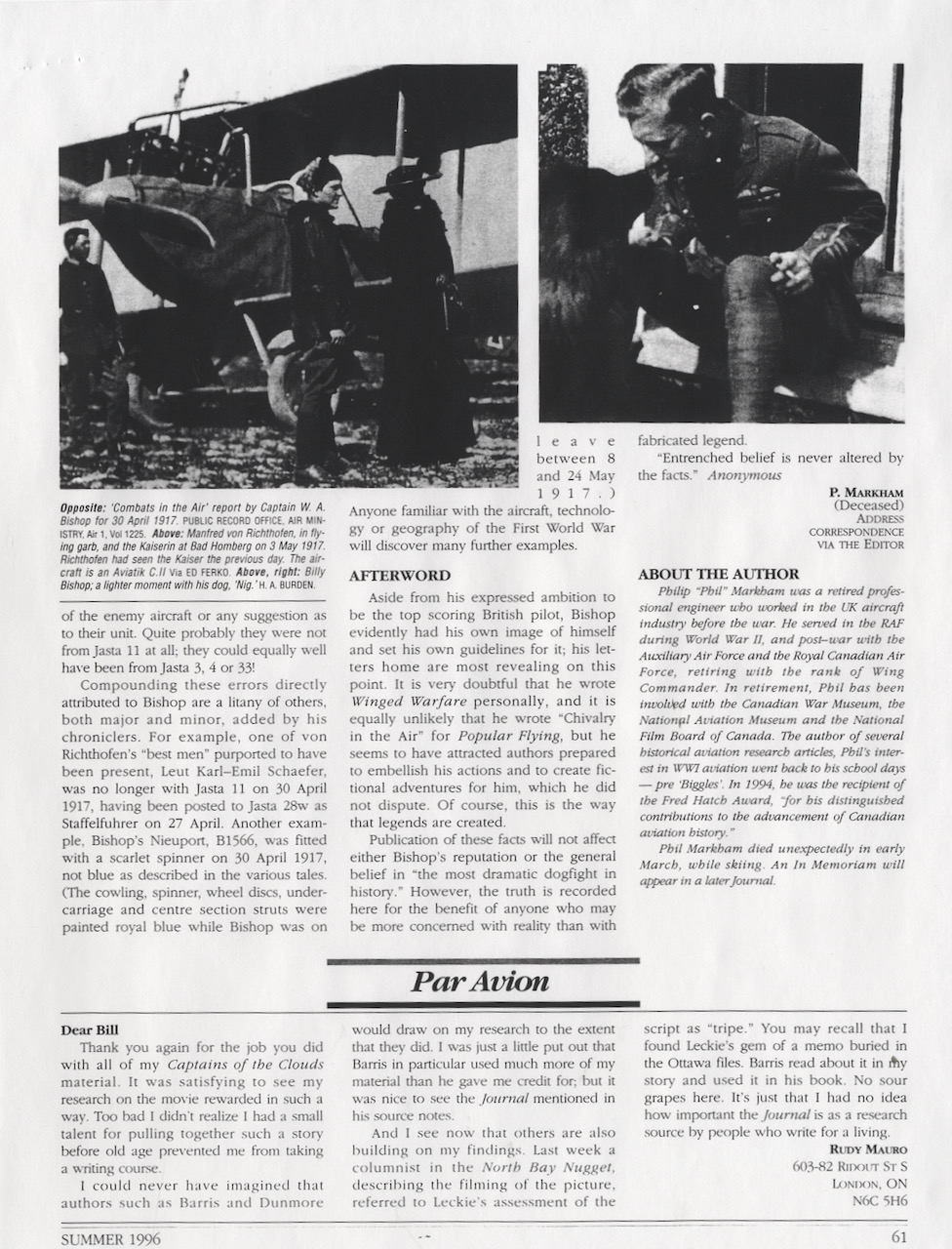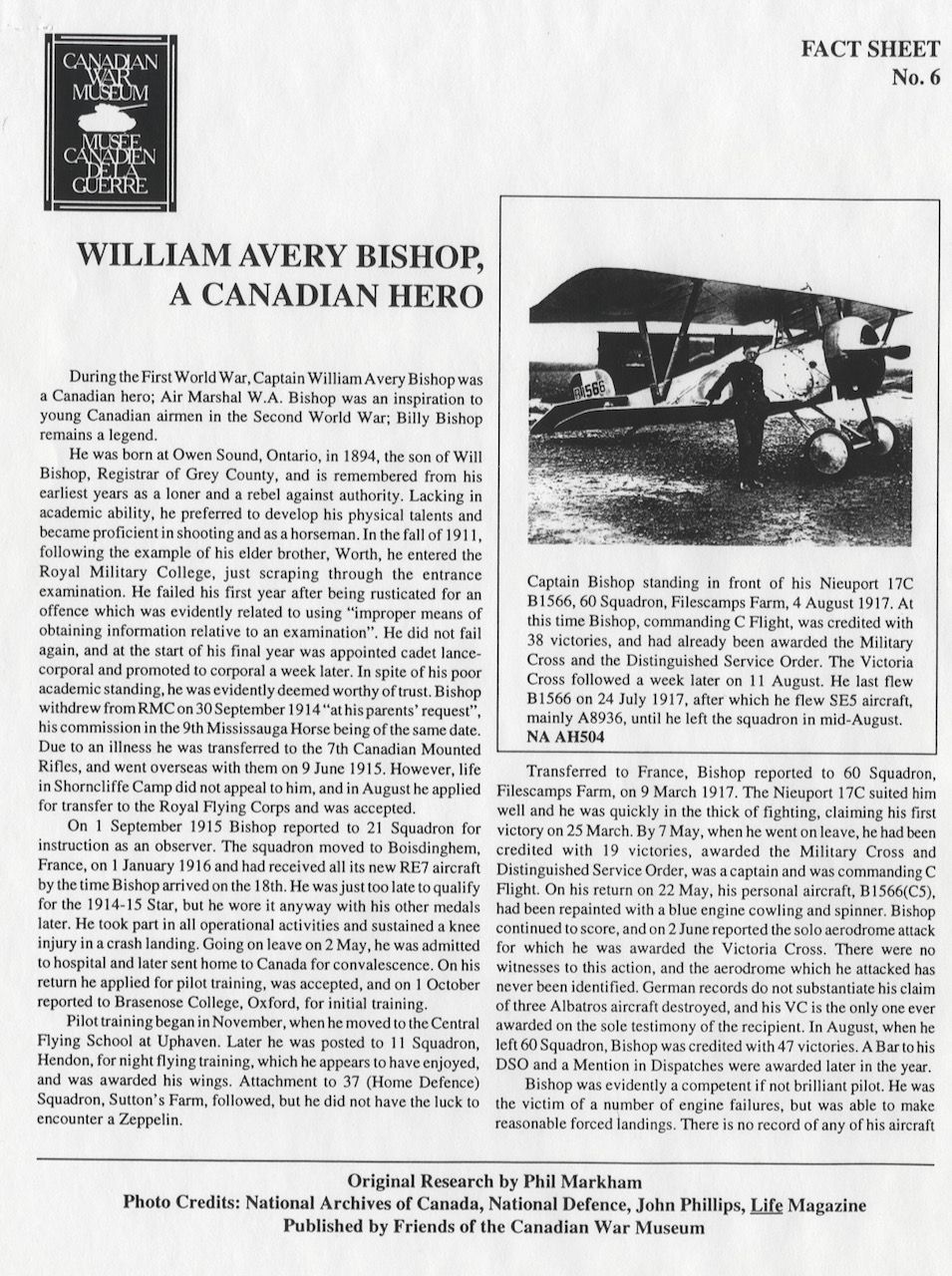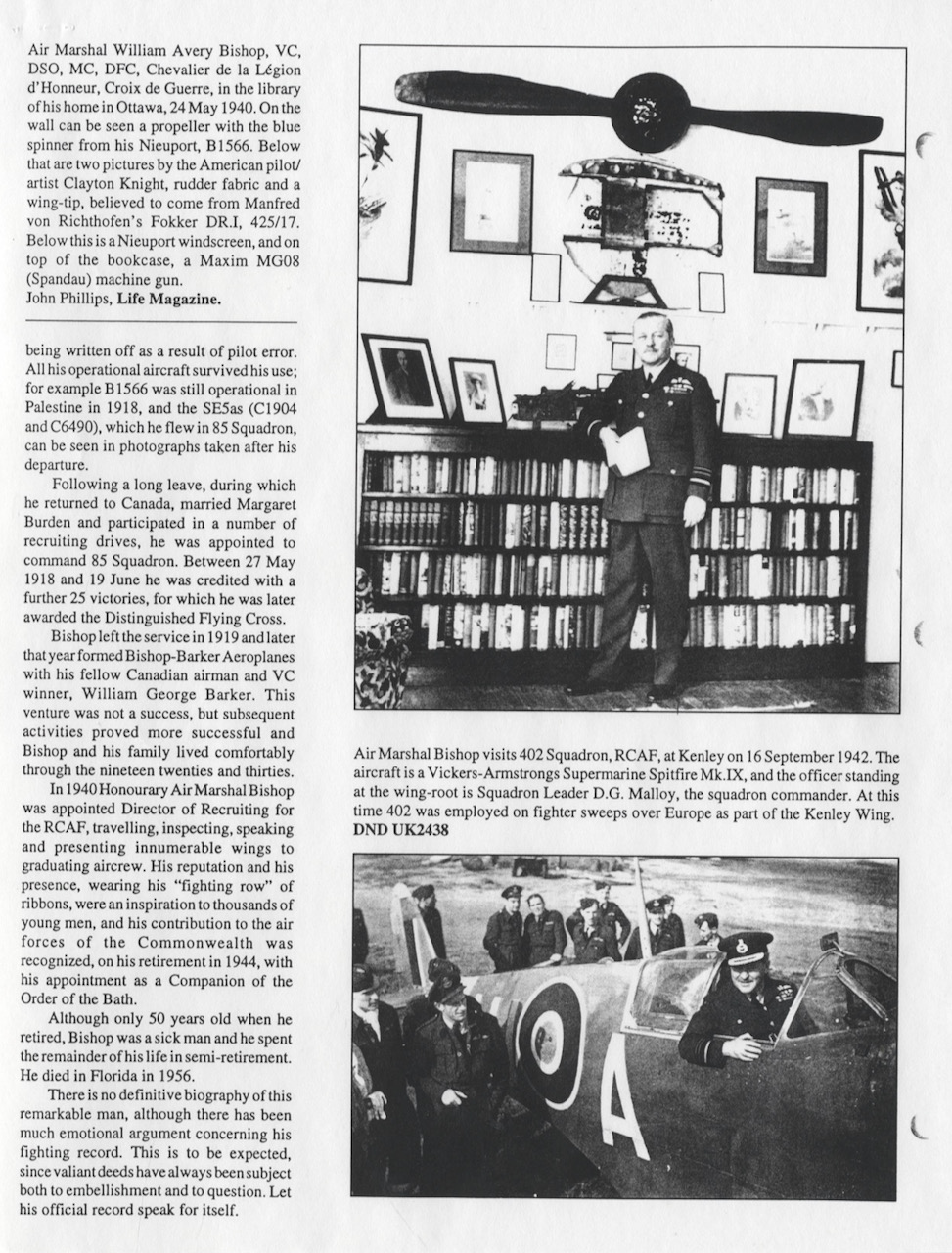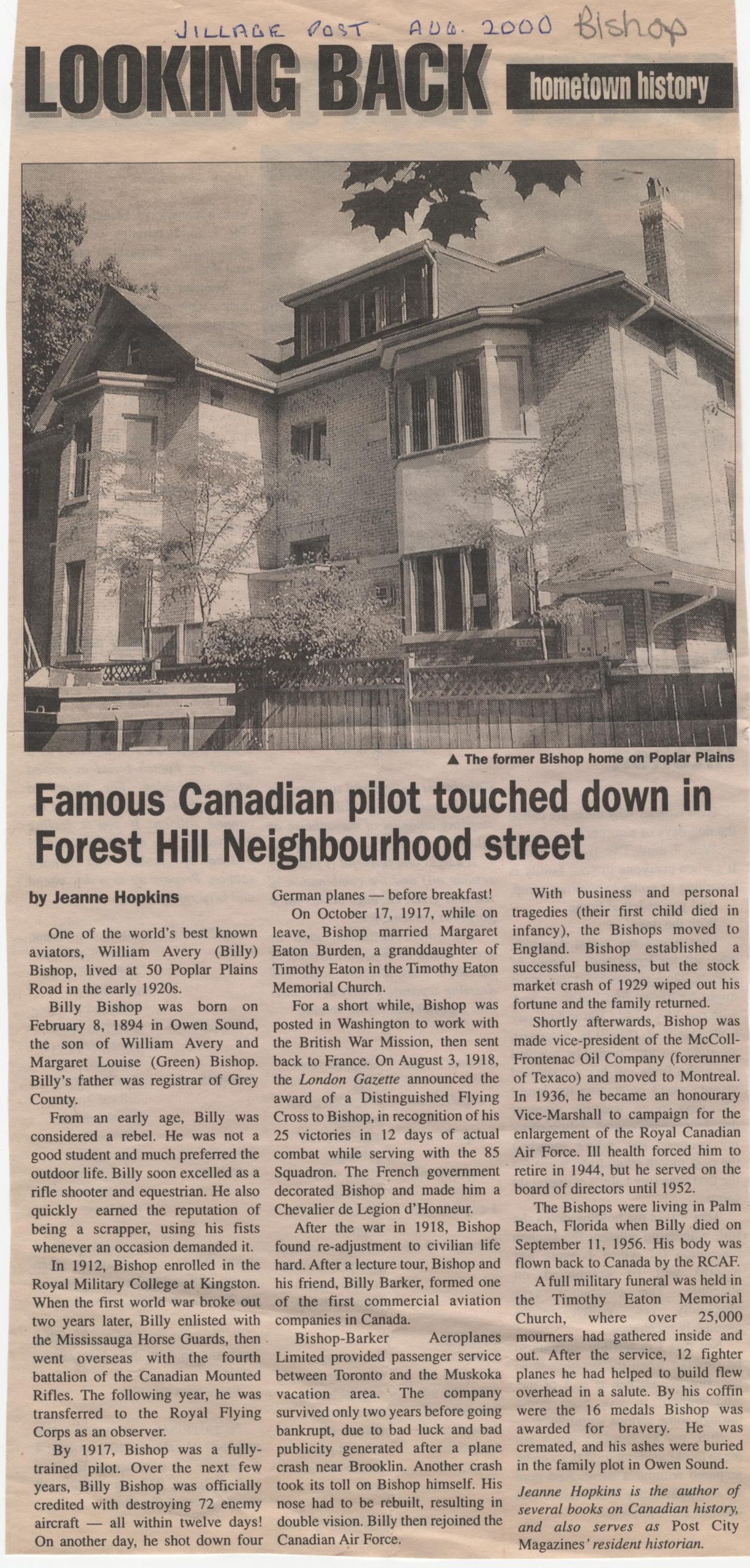William Avery Bishop
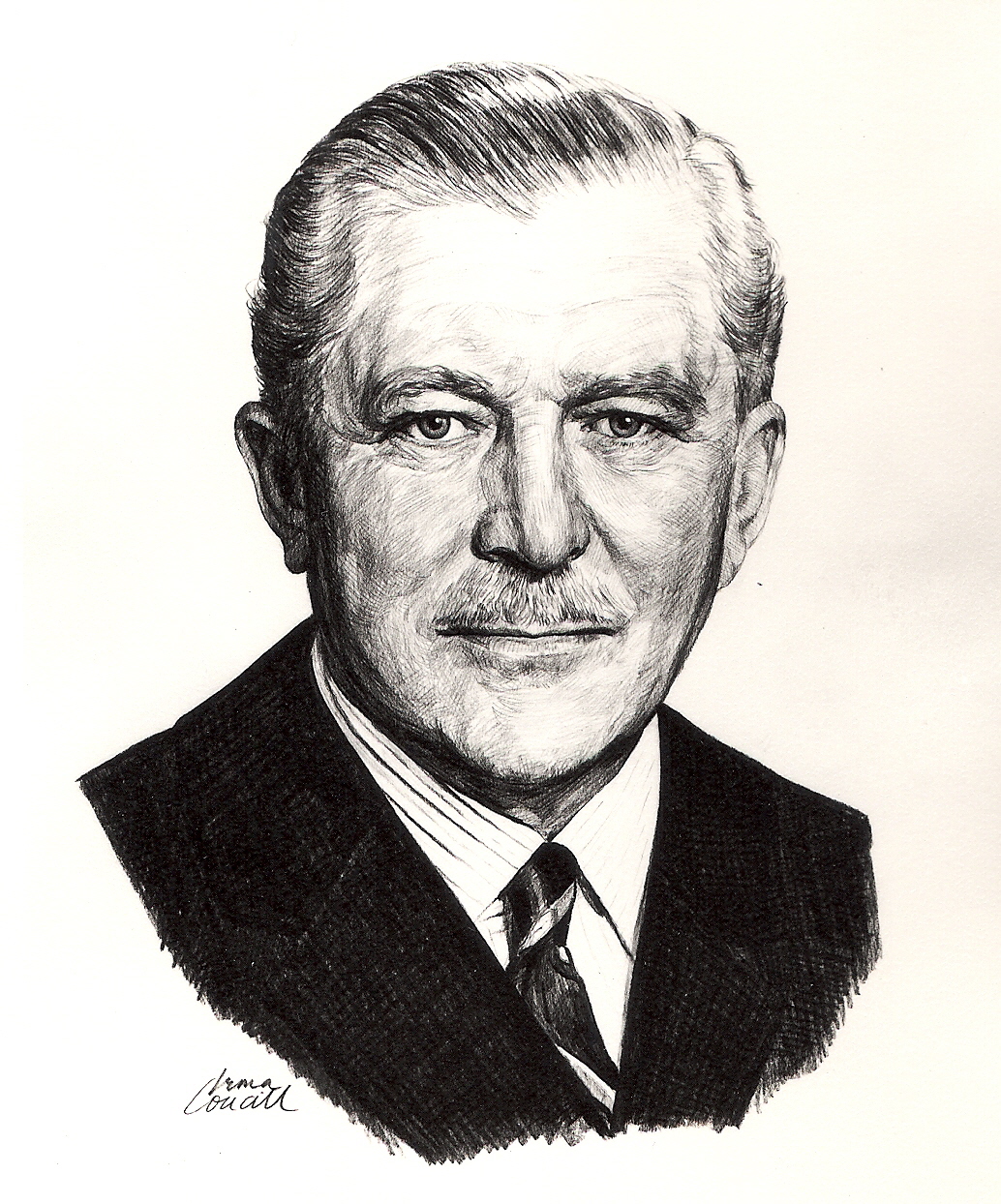
Nickname: Billy
Birthdate: February 8, 1894
Birth Place: Owen Sound, Ontario
Death Date: September 11, 1956
Year Inducted: 1974
Awards: VC; CB; DSO*; MC; DFC; ED; Croix de Guerre with Palm (France); Chevalier of the Legion of Honour (France)
His winning of the Victoria Cross in aerial combat must be regarded as one of the most outstanding contributions possible to the military aspect of Canadian aviation
His First Victories
William Avery 'Billy' Bishop, V.C., C.B., D.S.O.*, M.C., D.F.C., E.D. was born on February 8, 1894, in Owen Sound, Ontario. He was educated there and at the Royal Military College at Kingston, Ontario, from where he enlisted in the 4th Battalion, Canadian Mounted Rifles in 1914. The following year in England he transferred to the Royal Flying Corps (RFC) and was posted to France as an air observer. In March 1917 Lieutenant Bishop was commissioned as a pilot with No. 60 Squadron RFC and he immediately shot down his first enemy aircraft.
On April 7, 1917, he was awarded the Military Cross (M.C.) for downing an enemy observation balloon and a German fighter, and the following day he engaged eight enemy aircraft, destroying two of them as well as a second balloon. In April 30, 1917, he battled nine times in two hours, engaging eleven different enemy aircraft in the first hour, shooting down two and dispersing the remainder. Two days later he engaged 23 enemy aircraft in three sorties and shot down three of them. The citation accompanying the award of the Distinguished Service Order (D.S.O.) read:
"For conspicuous gallantry and devotion to duty. While in a single-seater he attacked three hostile machines, two of which he brought down, although in the meantime he was himself attached by four other hostile machines. His courage and determination have set a fine example to others."
The Victoria Cross
It was before dawn on June 2, 1917, that Captain Bishop, flying a Nieuport, in a spectacular long fight earned the Victoria Cross (V.C.) "for conspicuous bravery, determination and skill".
The words of the War Office citation read:
"Captain Bishop flew to an aerodrome 12 miles the other side of the German lines. Seven machines, some with their engines running, were on the ground. He attacked these from about 50 feet, and a mechanic who was starting one of the engines was seen to fall. One of the machines got off the ground, but at a height of 60 feet Captain Bishop fired 60 rounds into it at very close range and it crashed. A second machine got off the ground, into which he fired 30 rounds at 150 yards range and it fell into a tree. Two more machines then rose. One he engaged at 1,000 feet, emptying the rest of his drum of ammunition. The machine crashed 300 years from the aerodrome, after which Captain Bishop emptied a whole drum into the fourth hostile machine and then flew back to his station. Four hostile scouts were about 1,000 feet above him for about a mile of his return journey, but they would not attack. His machine was very badly shot up by machine gun fire from the ground."
In addition to this honour, he received a Bar to his D.S.O. for "gallantry and distinguished service in the field, for consistent dash and fearlessness and for having destroyed at least 45 enemy planes within five months".
Bishop became the first Canadian airman to win the coveted Victoria Cross. He had an amazing total of 72 confirmed enemy aircraft destroyed, making him the highest-scoring 'ace' of the British Empire in World War I.
More Victories
Bishop was promoted to Major and returned to Canada to air in recruiting, but in 1918 returned to France, taking command of No. 85 Squadron and setting out on what authority has labelled 'a carnival of destruction'. In twelve days alone he brought down 25 enemy aircraft, bringing his total to 72. He was decorated again, receiving the Distinguished Flying Cross (D.F.C). The French Government honoured him with the Croix de Guerre with Palm and named him a Chevalier of the Legion of Honour.
In August 1918, Bishop was relieved from operational flying, and in London was tasked as Commander of the first Canadian Air Force. It was during this period that the Maple Leaf came into use as an identification device on Canadian military aircraft. The Armistice put a temporary end to Canada's plans for an air force.
After the War
Along with William G Barker, V.C., Bishop formed an airline serving Muskoka and Toronto, Ontario, but it was not successful. He returned to England to engage in several business operations before becoming Vice-President and Director of McColl-Frontenac Oil Company in Montreal.
Early in World War II he became Director of Recruiting for the Royal Canadian Air Force, serving with the rank of Honourary Air Marshal until 1944, when he returned to McColl-Frantenac. Bishop was named a Companion of the Order of the Bath (C.B.). He passed away in Palm Beach, Florida on September 11, 1956.
William Avery 'Billy' Bishop was inducted as a Member of Canada's Aviation Hall of Fame in 1974 at a ceremony held in Edmonton, Alberta.
New Stories
To return to the Inductee Page, please click here.

